Jack Nicklaus is more than a golfer, he’s an idea. It’s one thing to be the greatest champion the game has ever known, but to also be the quintessence of class, dignity and sportsmanship? Well, Jack represents something bigger than himself. In honor of The Golden Bear turning 80 on Tuesday (Jan. 21), GOLF.com is spending Nicklaus’ birthday week — with a little help from his friends — honoring the man himself. You can find even more Jack at 80 coverage in GOLF’s February issue.
In a personal and professional life so overwhelmingly accomplished, choosing Jack Nicklaus’ 80 greatest moments is an incredible challenge. Could there easily have been hundreds? We’ll let Verne Lundquist answer that: “Yes, sir!”
Spring 1950
At age 10, Jack Nicklaus first tags along with his father, Charlie, for a round at Scioto Country Club, in Columbus, Ohio. Smitten by the game, he begins taking lessons with the club’s head pro, Jack Grout. Young Jack is a quick study. The first time he keeps score, he cards a 51 over nine holes. But the season’s most enduring memory comes when Charlie catches Jack throwing a club in frustration. The paternal scolding that follows is a defining moment that shapes how Jack comports himself throughout his career. More important than any swing tip is learning how to play the game.
June 9, 1953
At 13, Jack wins the Ohio State Junior Championship, his first of three consecutive victories in the event.
Summer 1953
He breaks 70 for the first time and gets his first official handicap: plus-3.
July 29 to 30, 1953
At 13, playing his first national tournament, the USGA Junior Championship, for golfers 17 and under, Jack wins his first three matches before being eliminated in the fourth round. That same year, at another amateur event, he earns a reprimand from USGA executive director Joe Dey, who almost penalizes Jack for being late to the first tee. Jack is never late again. “Outside of my father and Jack Grout, Joe Dey was the most influential person in my life,” Jack says.
Summer 1954
He makes his first hole in one, from 154 yards, at the Scioto Junior Championship.
September 12, 1955
At 15, competing in his first U.S. Amateur Championship, Jack loses in the first round, 1-down. The consolation? He meets Bobby Jones.
July 29, 1956
At 16, he wins his first tournament against pros: the Ohio State Open. The following year, he claims his first national title, the U.S. National Jaycees Championship, at the Scarlet Golf Club, in Columbus.
Spring 1957
Jack is named to the First Team All-League High School Basketball Team. At one point in the season, he sinks 26 consecutive free throws.
September 2, 1957
Earns his first mention in Sports Illustrated, which will go on to feature him on its cover 20 times.
September 1957: Meets future wife Barbara Bash
On the first weekend of the fall semester at Ohio State, Jack, 17, is standing on a stairwell in the Oval when he’s introduced by mutual friends to a freshman nursing student. Barbara Bash is on her way to work at a campus science lab. But before she leaves, Jack gets her number. Less than two years later, on Christmas Day, 1959, he proposes. They are married the following summer. “All these years later, with all the good things that have happened to me, I still believe that Barbara is the most precious gift in my life,” Jack says. “She has been my foundation, my voice of reason, my sounding board, my biggest supporter, my best friend and the love of my life.”
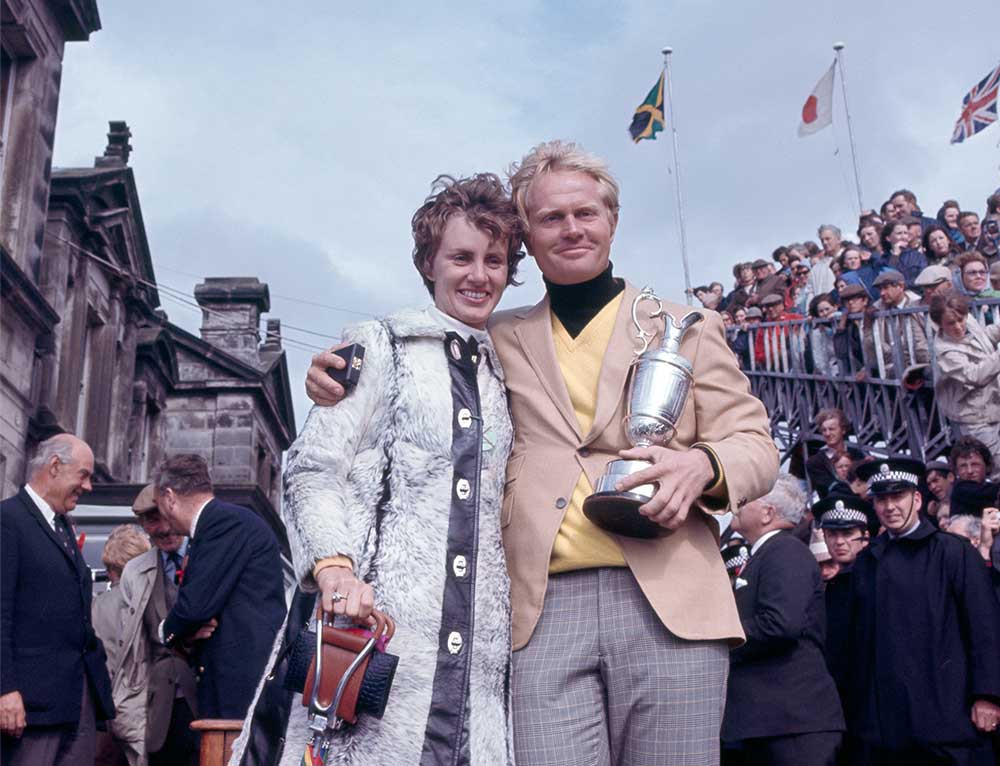
June 13, 1957
As a 17-year-old, he plays — but misses the cut — in his first U.S. Open, at Inverness.
June 13, 1958
Makes his first cut at the U.S. Open, at Southern Hills Country Club, in Oklahoma, his second appearance in the event. Finishes T41.
September 25, 1958
He first meets Arnold Palmer, at Dow Finsterwald Day, an annual 18-hole exhibition match in Athens, Ohio.
Early 1959
Still under the guidance of Jack Grout, Nicklaus is selected to the U.S. Walker Cup team. In his career, he’ll play on or captain 17 national teams, including eight Ryder and four Presidents Cups.
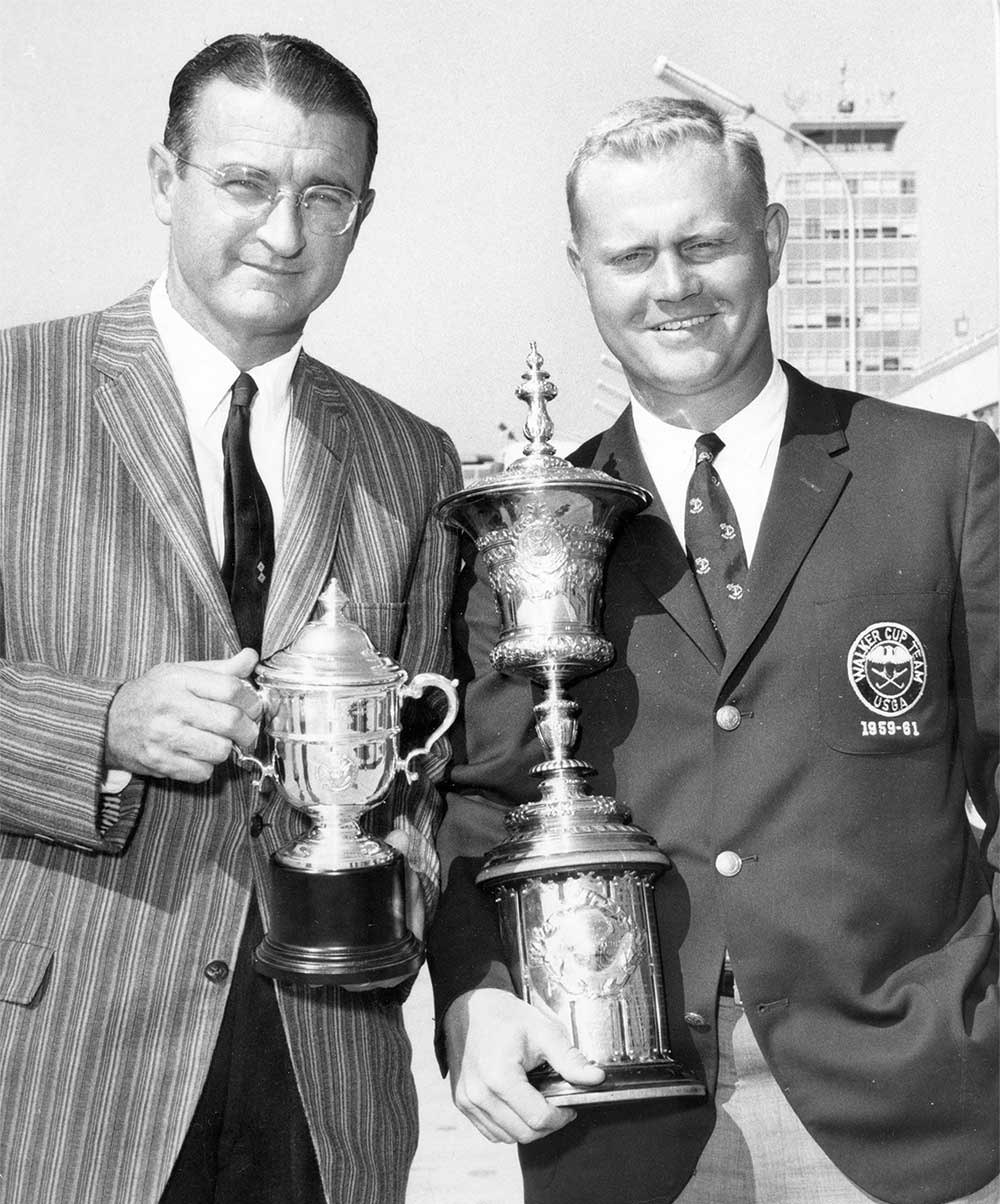
March 1959
The azaleas are in bloom and Jack’s eyes are bulging as he drives down Magnolia Lane for the first time, to compete in his first Masters. Even before the tournament begins, Jack makes his presence felt by eating two steaks at dinner every night, along with many sides. The story goes that his voracious appetite prompts the club to put a limit on free food. But that’s just legend. This is fact: Jack’s roommate in the Crow’s Nest that week is Phil Rodgers, who, 20 years later, helps revive Jack’s flagging game with some key short-game instruction.
May 1959
On his first trip to Scotland, Jack visits North Berwick, where he buys the hickory-shafted Ben Sayers putter that he’ll use in his two U.S. Amateur Championship wins.
September 19, 1959
At 19, captures his first U.S. Amateur Championship, defeating Charlie Coe, 1-up, in the 36-hole final at the Broadmoor, in Colorado.
Spring 1960
As a member of the Ohio State University golf team, Jack is named an NCAA All-American, an honor he repeats in 1961.
June 18, 1960
Competing as an amateur, finishes runner-up to Palmer in the 1960 U.S. Open at Cherry Hills. His four-day score of 282, two shots behind the King, remains the lowest ever by an amateur in the U.S. Open until Viktor Hovland beats the record in 2019. Paired with Jack in the final group, Ben Hogan declares: “I played with a kid today that would’ve won by five shots if he knew what he was doing.”
June 1961
Wins the NCAA Championship, individual title.
September 16, 1961
Wins his second U.S. Amateur Championship, defeating Dudley Wysong in the finals, 8 and 6, at Pebble Beach.
September 23, 1961
Jack Nicklaus Jr., the first of Jack and Barbara’s five children, is born. Laying eyes on his son for the first time, Jack Sr. faints. As legend would have it, he does the same at the birth of each of his children.
Fall 1961
Writing in the Melbourne Age, journalist Don Lawrence dubs Jack “the Golden Bear.” Taken by the name, Jack picks the Golden Bear logo for his shirts.
November 8, 1961
Turns pro. A day later, Jack receives a letter from Bobby Jones, encouraging him to remain an amateur. “Bob Jones had always been his idol,” Barbara Nicklaus recalls later. “I think in his mind, he wanted to stay an amateur because he adored Bob Jones. But we were married. He was trying to sell insurance, go to school and play golf…. We talked it over and he said, ‘You know, if I want to be the best, I need to play with the best.’”
June 17, 1962
At 22, he’s still practically a kid, up against the King on his home court in an 18-hole playoff at the U.S. Open. The course is Oakmont, the heart of Palmer country, and to say the crowds are partisan is putting it politely. But Jack is unfazed from the start. In those days, the winner of a U.S. Open playoff received not just a first-place check but also the proceeds from the day’s ticket sales. On the range before their head-to-head, Palmer sidles up to Jack and suggests that they split the pot, regardless of the outcome. No thanks, Jack replies. Winner take all. And he does. It’s the first of his 18 major crowns.
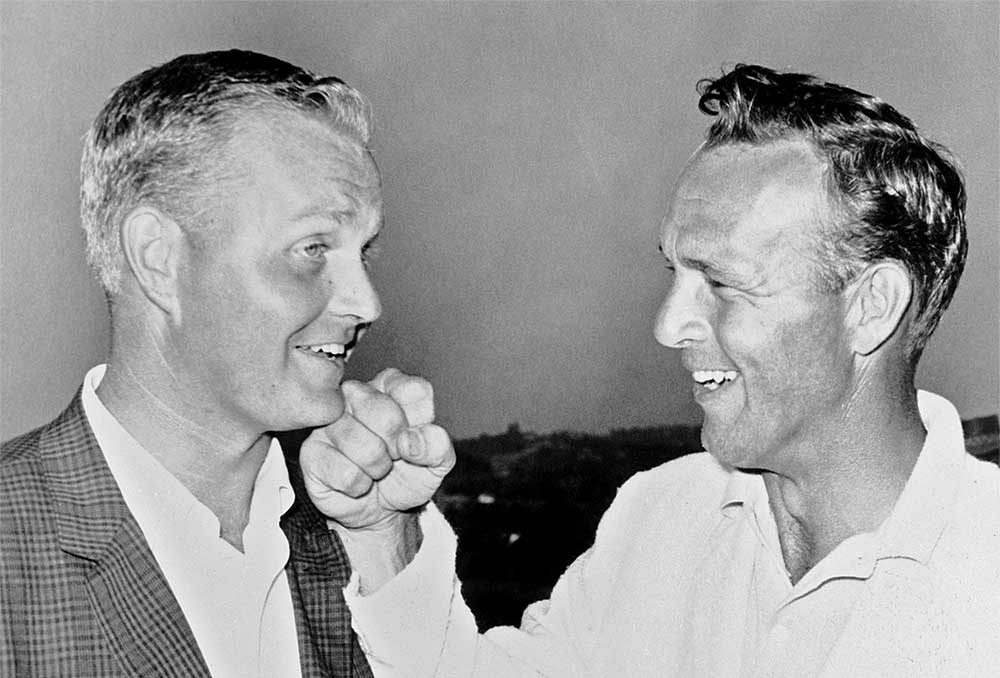
June 29, 1962
Lands on the cover of Time.
Winter 1962
Jack quits smoking on the golf course, a decision he makes after watching a replay of his playoff with Palmer in the 1962 U.S. Open. “We must have looked like two chimneys,” Jack says. “I never smoked again in public after that.”
January 30, 1963
At the Palm Springs Golf Classic, meets Angelo Argea, who carries Jack’s bag on his way to victory. Argea remains Jack’s caddie for more than 20 years.
April 7, 1963
At 23, Jack wins his first Masters, becoming the youngest player ever to capture the Green Jacket. Afterward, he hands Bobby Jones the winning ball.
July 21, 1963
Wins his first PGA Championship, at Dallas Athletic Club, two shots ahead of runner-up Dave Ragan. His winnings: $13,000.
April 7, 1964
Jack is given a Masters locket by Ben Hogan for entrance into the Masters Club dinner.
April 11, 1965
Wins his second Masters — and fourth major — finishing nine shots clear of Palmer in a dominating performance that prompts Bobby Jones to say: “He plays a game with which I’m not familiar.”
1965
The two had crossed paths in Ohio before, at the 1957 U.S. Open, where Pete Dye finished eight strokes ahead of Jack. Now, Dye is back in Jack’s home state, not as a competitor but as a course architect. He’s building The Golf Club, just east of Columbus, and he asks for input from the multiple major winner. Though Jack downplays his knowledge of design, he kicks in with ideas and enjoys the process. Nicklaus the architect is born. “The thing I admire about Jack’s design work is a lot of golf professionals want to stick their names on it and have someone else build it,” Dye observes years later. “Not Jack. He’s been very active in his golf course design business.”
April 11, 1966
Wins his third Masters — and fifth major — becoming the first back-to-back winner of the event.
ADVERTISEMENT
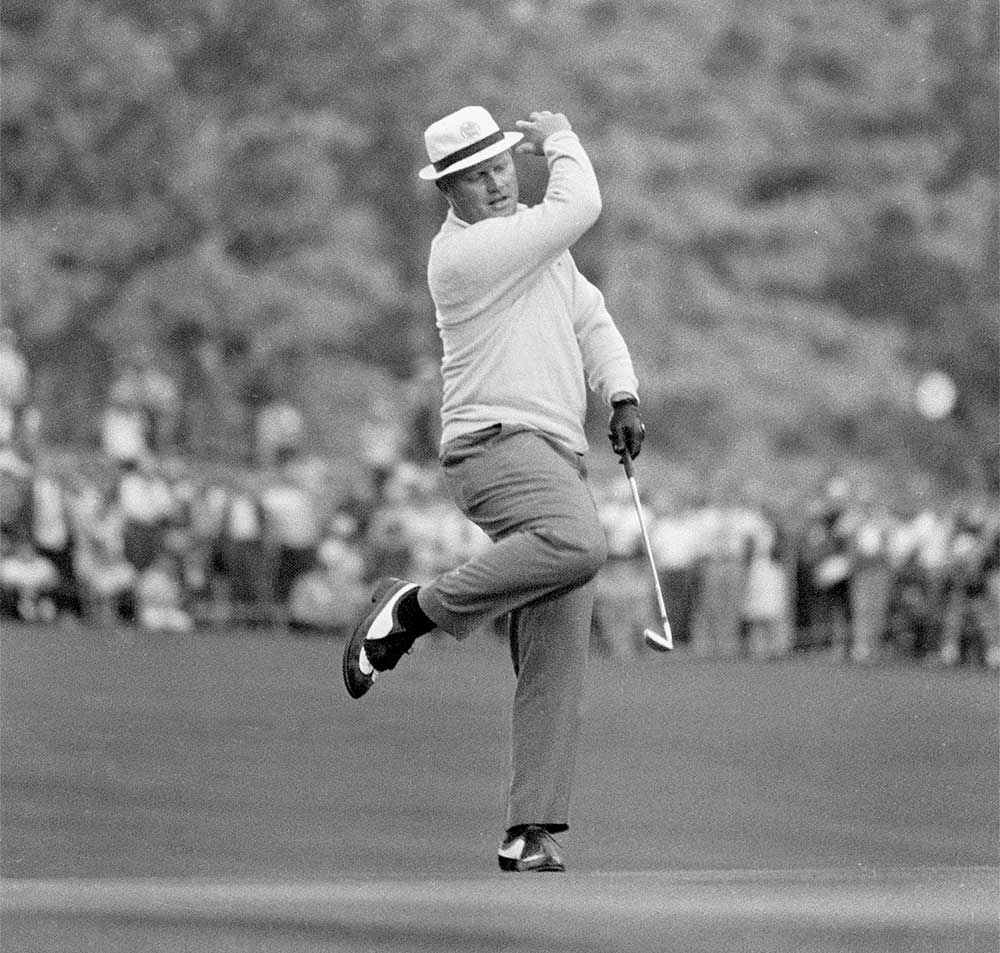
July 9, 1966
Wins his first British Open Championship, at Muirfield, for his sixth major title, completing the career Grand Slam.
June 18, 1967
Wins his second U.S. Open, at Baltusrol, four shots ahead of Palmer. His final-round 65 gives him a four-day total of 275, a new record for the event.
Winter 1967
Voted PGA Player of the Year, an honor he will go on to earn five times.
September 20, 1969
Concedes a short-par putt to Tony Jacklin on the final hole of the Ryder Cup, halving the hole, halving the match and halving the Cup. The gesture, which came to be known as The Concession, is often called one of the game’s greatest acts of sportsmanship.
November 27, 1969
Harbour Town Golf Links opens on Thanksgiving Day. It is the most heralded of Pete Dye and Jack’s four design collaborations.
July 12, 1970
Wins his second British Open — and eighth major — at the Old Course at St. Andrews.
February 28, 1971
Wins his second PGA Championship — and ninth major — at PGA National, completing his second career Grand Slam.
April 9, 1972
Wins his fourth Masters — and 10th major — leading the event wire-to-wire.
June 18, 1972
Wins his third U.S. Open — and 11th major — at Pebble Beach, a victory punctuated by his famous flagstick-rattling 1-iron on the par-3 17th hole during a blustery final round.
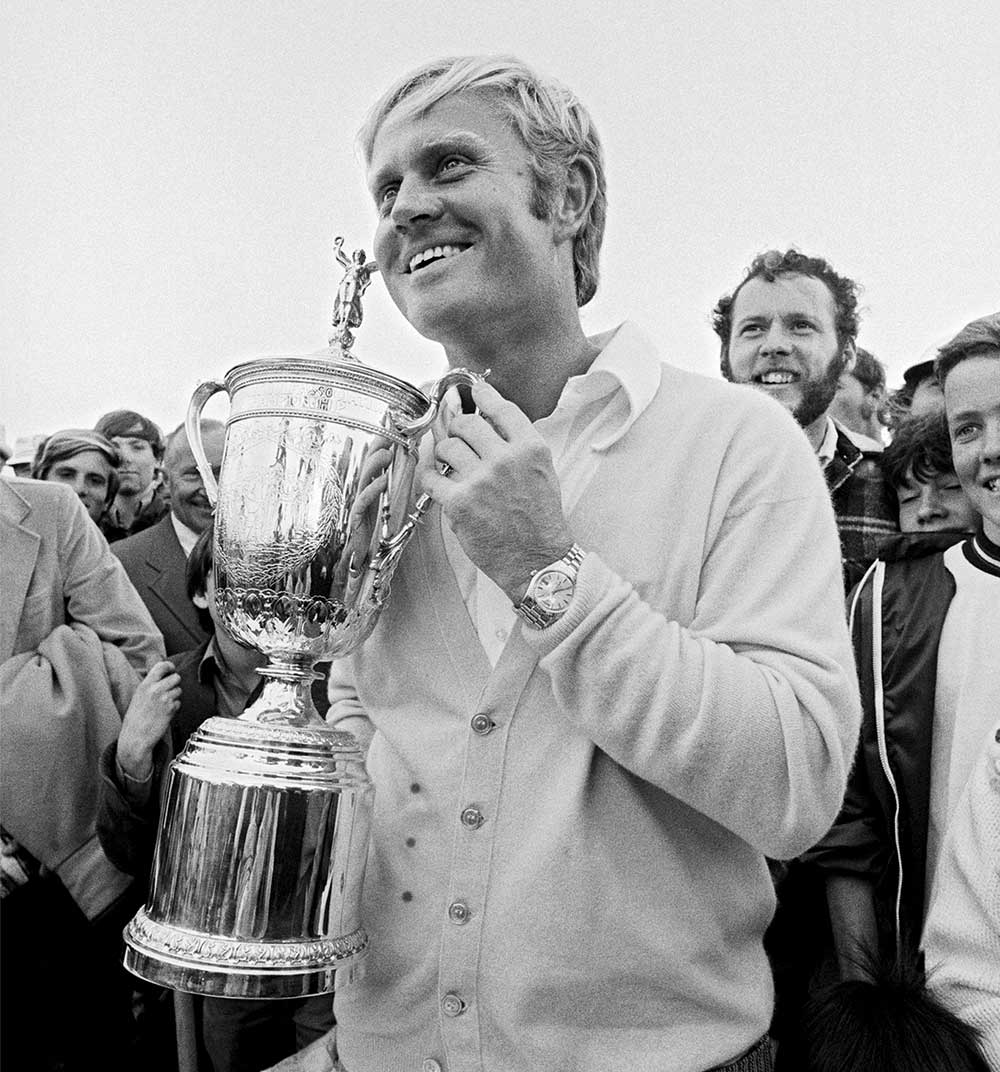
August 12, 1973
Wins his third PGA Championship at Canterbury Golf Club, in Ohio, breaking Bobby Jones’ record for career major titles (14; including U.S. Amateurs).
April 1974
Named one of the original 13 inductees into the World Golf Hall of Fame, part of an inaugural class that includes Walter Hagen, Ben Hogan, Byron Nelson, Sam Snead and Arnold Palmer.
May 27, 1974
Muirfield Village opens. That same month, the course is dedicated with an exhibition match between Jack and Tom Weiskopf.
1974
Simon and Schuster publishes Jack’s hugely influential instruction book Golf My Way.
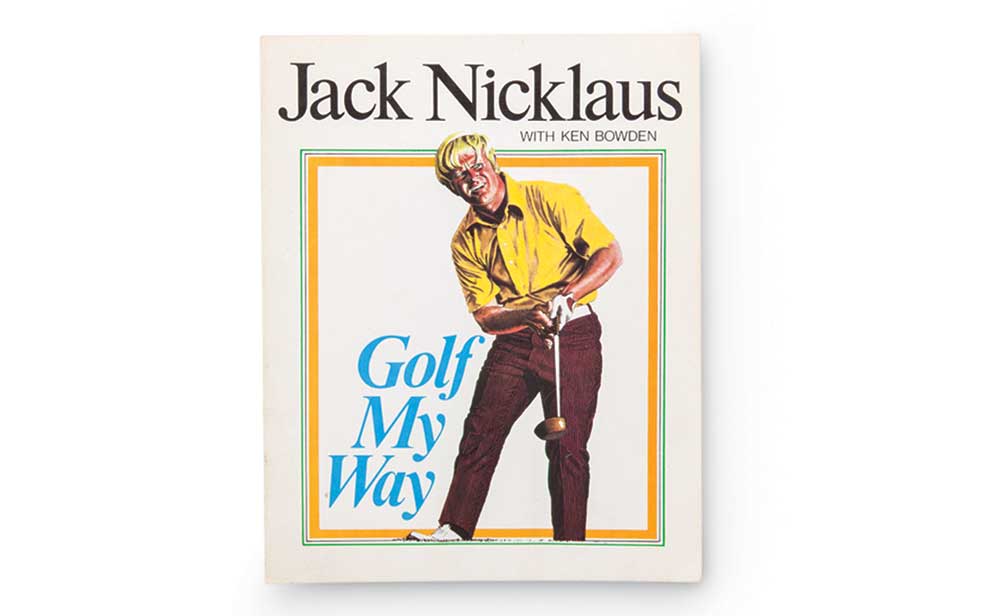
April 13, 1975
Wins his fifth Masters — and 13th major — one shot ahead of runners-up Johnny Miller and Tom Weiskopf.
August 10, 1975
Wins his fourth PGA Championship — and 14th major title — at Firestone Golf Club.
1976
Jack’s first solo course design, Glen Abbey, in Oakville, Ontario, opens for play.
July 9, 1977: The Duel in the Sun
Nearly as astounding as his 18 major titles are his 19 runner-up finishes in majors, none more memorable than a British Open battle with Tom Watson better known as the Duel in the Sun. Paired for the last two days at Turnberry, the rivals turn the tournament into a two-man competition that leaves their closest pursuer, Hubert Green, 10 strokes behind. On the closing hole of the final round, trailing by one, with Watson looking at a two-footer for birdie, Nicklaus lashes an improbable approach from beneath a bush to 35 feet, then drains an even more unlikely putt that makes his opponent’s clincher something more than a formality. For all the scintillating play, the image that lingers comes moments later, as Watson and Nicklaus walk from the 18th green, each with an arm over the other’s shoulder, gracious in both victory and defeat.
ADVERTISEMENT
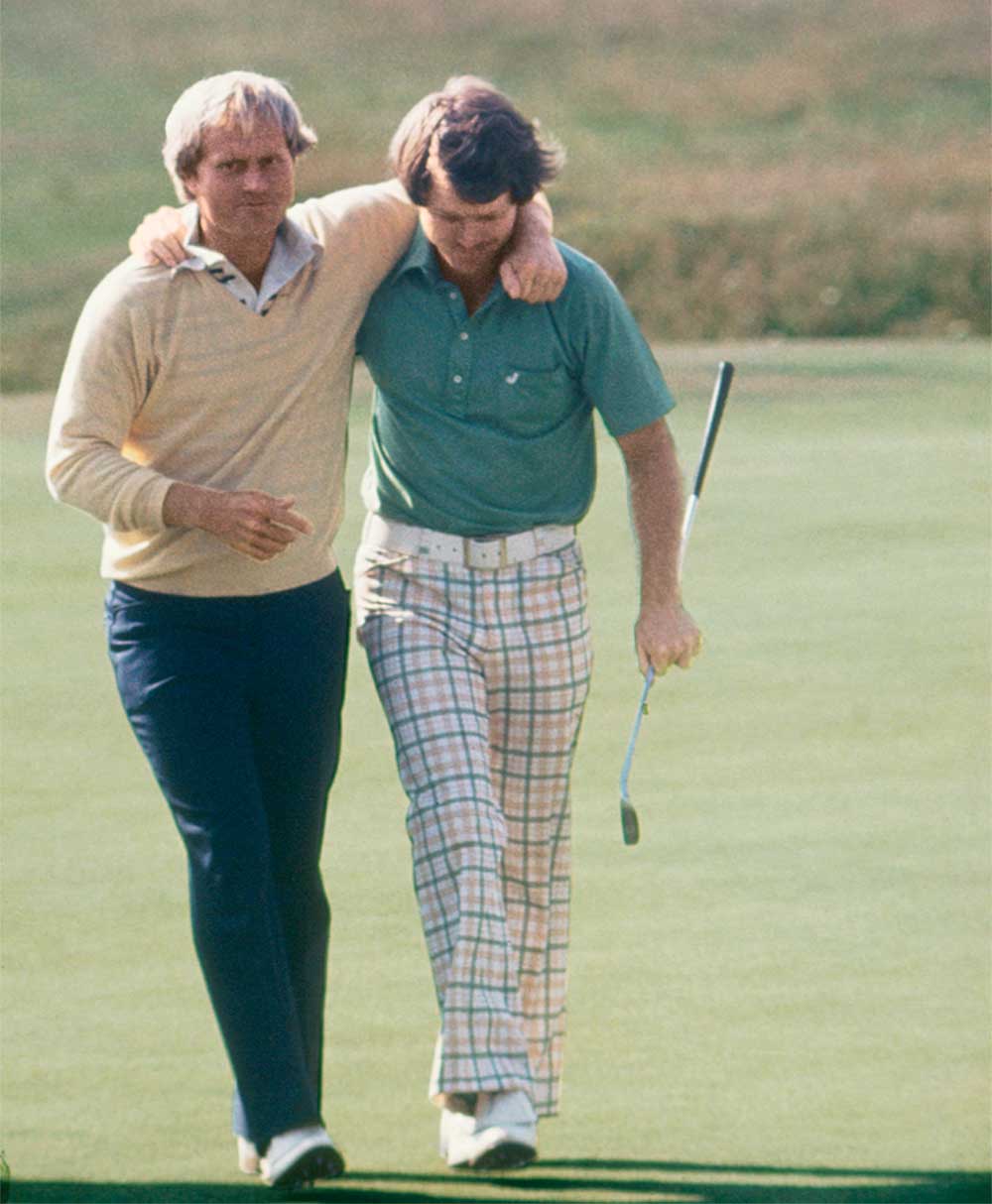
September 21, 1977
Worlds collide when Jack sits for a portrait with postmodern art icon Andy Warhol. While snapping Polaroids, Warhol asks him to move his “stick” to the left. “Excuse me,” Jack replies. “This is not a stick. This is a club.”
February 26, 1978
Wins Jackie Gleason’s Inverrary Classic to top Ben Hogan in all-time PGA Tour wins, with 65.
July 15, 1978
At St. Andrews, Jack wins his third and final British Open — and 15th major — completing his third career Grand Slam.
November 11, 1978
Days before winning the Australian Open for the sixth time, Jack lands a near-record 1,385-pound black marlin, off the Great Barrier Reef.
1979
Becomes the first player to reach $3 million in career earnings. Four years later, he becomes the first player to reach $4 million.
August 5, 1979
Finishes 65th at the PGA Championship, the final major of a decade that saw Jack post eight major wins and 35 Top 10s in 40 events.
Winter 1979
After a subpar season, Jack works on his short game with Phil Rodgers. The fine-tuning helps propel him to two major titles in 1980.
June 15, 1980
Wins his fourth U.S. Open — and 16th major. After the victory, he swings by McDonald’s for a Big Mac. “That’s where Michael, our youngest son, wanted to go,” Barbara says.
August 10, 1980
Wins his fifth PGA Championship — and 17th major — at Oak Hill Country Club, in Rochester, N.Y.
June 20, 1982
After finishing two shots back of Tom Watson at the U.S. Open at Pebble Beach, Jack finds his young nemesis behind the 18th green and says: “You little son of a b—-, you’re something else!”
November 27, 1983
The first Skins Game is held, featuring Jack, Arnie, Tom Watson and Gary Player. Aired by NBC, the event has a total purse of $360,000, of which Jack wins $40,000.
April 13, 1986: Wins the Masters at 46
“Nicklaus is gone, done. He just doesn’t have the game anymore. He’s 46, and nobody that old wins the Masters.” The article from the Atlanta Journal-Constitution, which a friend posts on the fridge of Jack’s rental home in Augusta, gets one thing right: Jack’s age. Wielding an oversized MacGregor putter, with his son Jack Jr. on his bag, Nicklaus closes with a back-nine 30, en route to his record sixth Green Jacket. “Yes, sir!” Verne Lundquist declares on the telecast, as Jack’s birdie putt drops on 17, giving him his first lead in the Masters in 11 years. Cup your ears around Augusta and you can hear the ground still shaking in the wake.
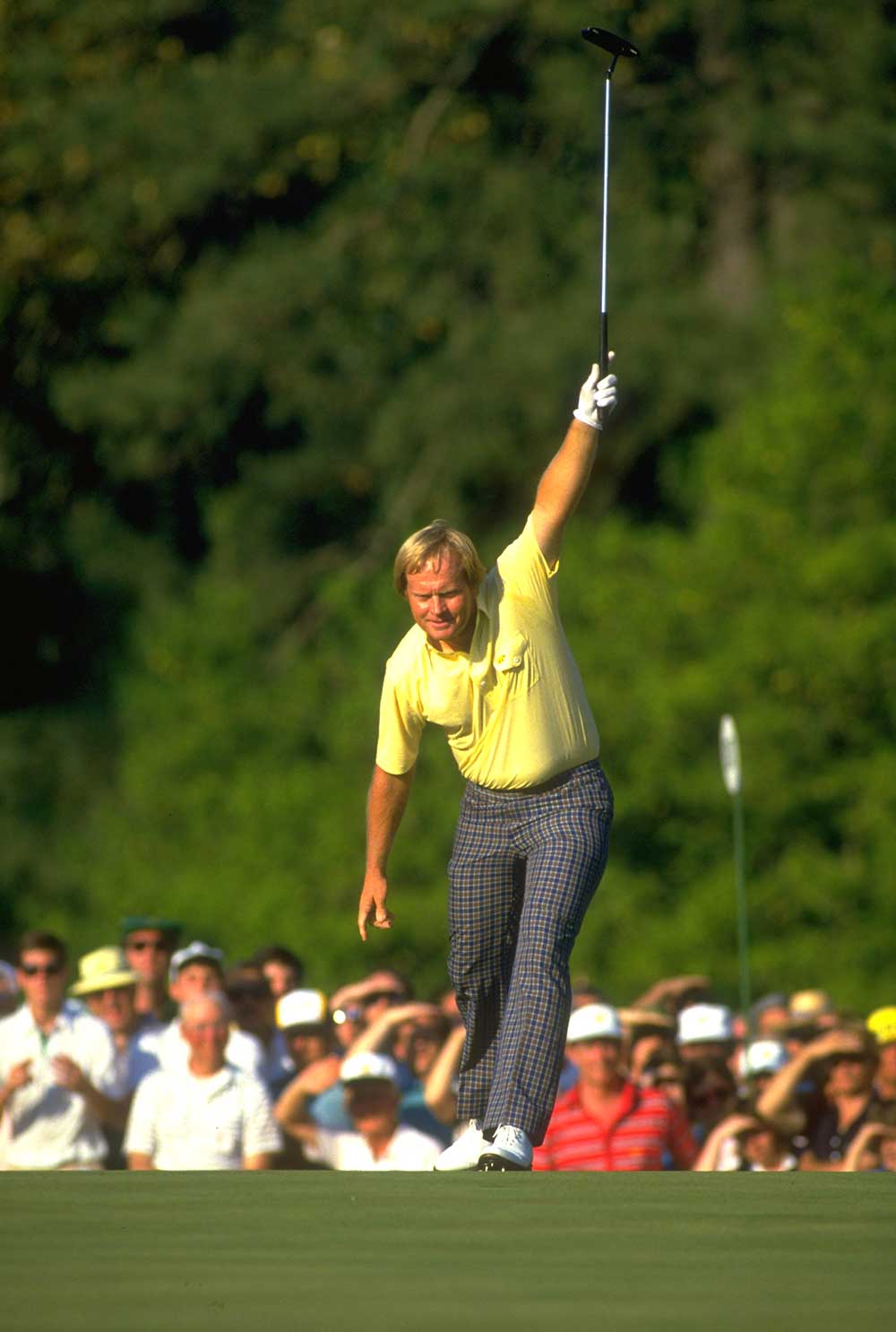
1988
After a disappointing performance, Jack is given a McDonald’s cup by Barbara, on which she has written: “There is no excuse for not being prepared.” The words become his motto.
April 1, 1990
In his first Senior PGA Tour appearance, Jack wins, at the Tradition at Desert Mountain. Within two years, he becomes the first winner of the career Champions Grand Slam — the Tradition, the U.S. Senior Open, PGA Seniors, and Senior TPC.
April 8, 1995
For the second time in two days, Jack holes out from the fairway for an eagle-2 on the 435-yard 5th hole at Augusta National.
June 12, 1997
Plays in the same U.S. Open with his son Gary.
April 12, 1998
At 58, finishes T6 at the Masters, becoming the only player to compete in 154 consecutive major championships.
December 1999
Named Golfer of the Century by, among many others, the Associated Press, the BBC and GOLF.
May 20, 2000
The Jack Nicklaus Museum opens at Ohio State.
August 19, 2000
During the second round of the PGA Championship at Valhalla, Jack and Tiger Woods are paired for the first time in competition. Jack has spent the summer bidding farewell to each major. On the 13th hole, both men play nice approach shots to the island green. As they march toward the narrow connecting bridge, each slows to a halt. Woods motions with his hand to wave Jack ahead. Jack returns the gesture: No, after you, insisting that Tiger lead the way.
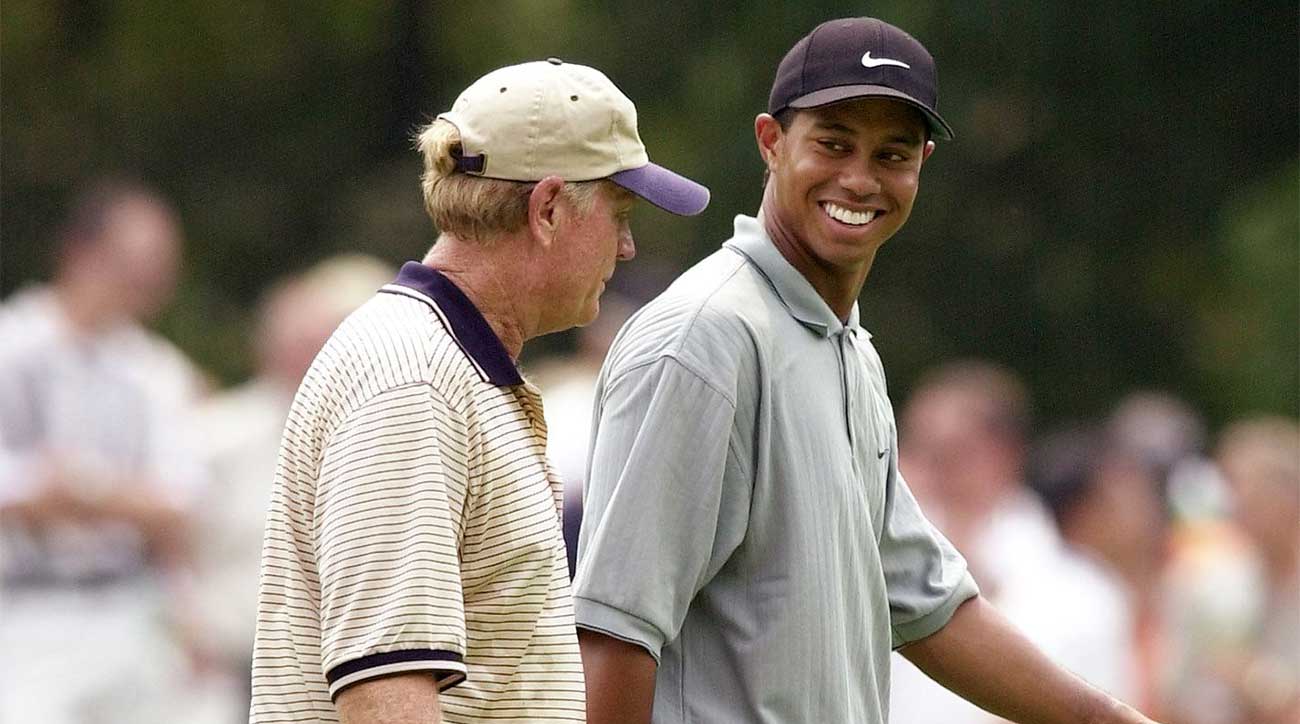
Summer 2004
Work begins on Tseleevo, the first of three award-winning courses that Jack builds in Russia.
November 9, 2005
Receives the Presidential Medal of Freedom from George W. Bush.
July 15, 2005
If you sent the story to a Hollywood producer, they’d tell you it strains belief. Jack’s farewell to the British Open also marks the close of his competitive career, and it happens, naturally, at the Old Course at St. Andrews, where Nicklaus ends things — how else? — with a birdie on 18. Though he makes little ceremony of the occasion, others do, including the British, who issue a commemorative 5-pound note, making Jack the first U.S. citizen to appear on British currency.
April 8, 2010
Makes his first appearance, alongside Arnold Palmer, as an honorary starter at the Masters.
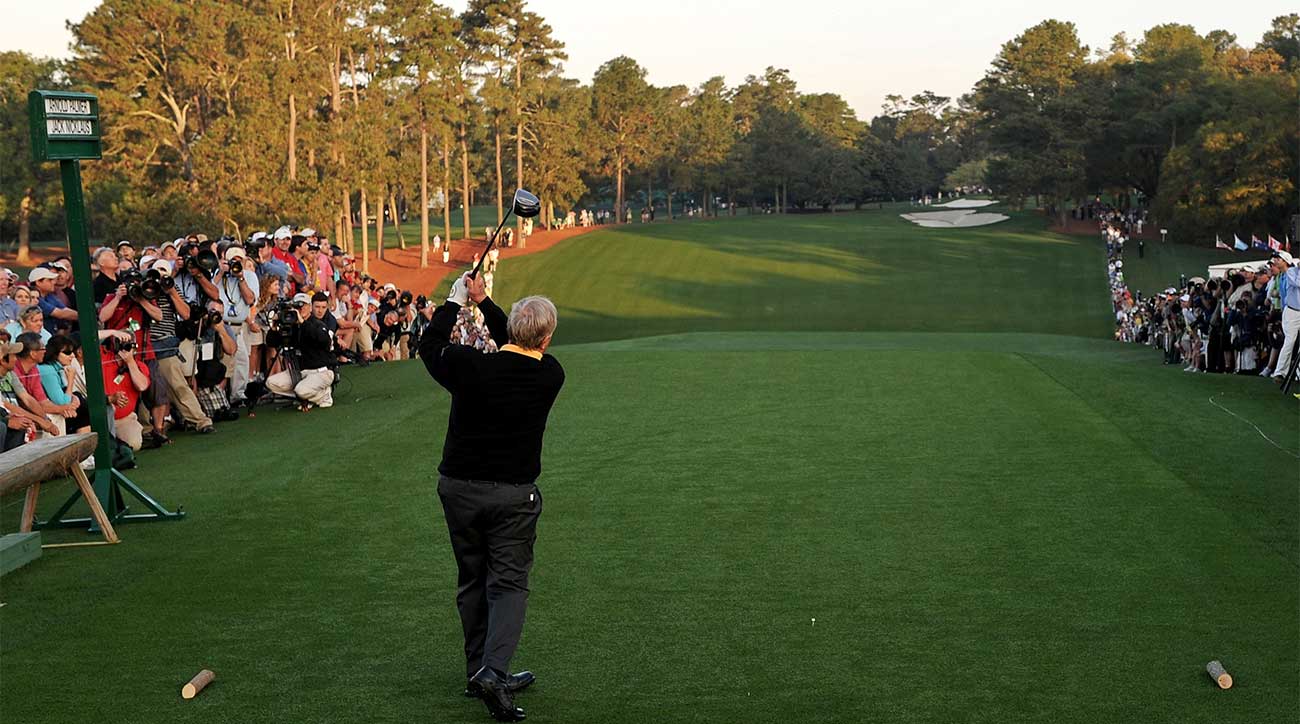
August 10, 2010
A ceremonial round featuring Jack Nicklaus, Johnny Miller, Tom Watson and Arnold Palmer to mark the opening of The Golf Club at Harbor Shores, a Nicklaus design in Benton, Michigan. On the 10th hole, Jack sinks a snaking 102-foot putt that Miller described as “unmakeable.”
March 24, 2015
Receives the Congressional Gold Medal, the highest civilian honor given by the U.S. Congress.
May 27, 2015
The USGA Golf Museum opens its Jack Nicklaus Room, a 1,200-square-foot exhibit hall devoted to Jack’s career.
June 4, 2016
Opens his 400th golf course worldwide: American Lake Veterans GC in Tacoma.
April 4, 2018
As Jack looks on, his 15-year-old grandson GT makes an ace at the Masters Par 3 Contest. Jack calls it his favorite Masters memory. And that says it all.
To receive GOLF’s all-new newsletters, subscribe for free here.

